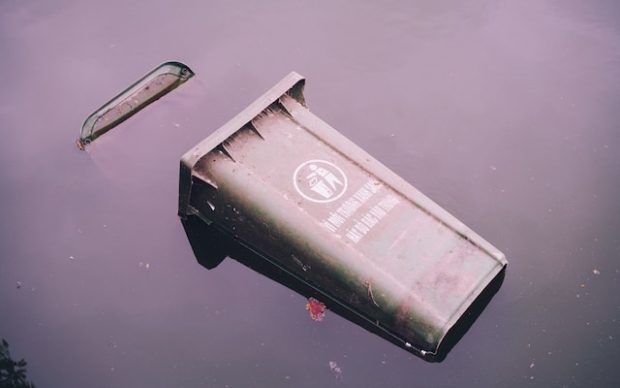When making long-term plans for wastewater treatment, community developers have traditionally considered such current or projected factors as population, wastewater volume, the regulatory landscape, environmental impact, existing wastewater infrastructure, which treatment technologies will be used, available acreage, and method of financing.
The many hurdles of the traditional approach can’t always be overcome. Planners routinely abandon projects on the drawing board, run into delays, or miss opportunities for efficiency and profitability as creative solutions gather dust. But new options for planning wastewater treatment can make development of enduring water treatment solutions a lot easier.
Long-Term Projection and Planning
Assessing future requirements for wastewater treatment has always been a challenging task. Community developers must commit, now, to building a full-size plant that will satisfy treatment needs across decades. And the plant becomes costly to scale if requirements turn out to be much greater than projected.
A containerized or modular wastewater treatment plant largely eliminates the risks attending uncertainties about future demand. Modular plants consist of mobile treatment units, units often housed in shipping containers, that can be efficiently trucked in and installed with little pouring of concrete. If demand zooms beyond projections, it’s no big headache: plant capacity can be increased by simply trucking in and installing more units. If demand turns out to be significantly less that projected, units can be removed.
Development of comprehensive and sustainable water management plans that account for changing needs has become fairly standard. But such plans too often neglect to include reuse of wastewater. The ability to use water more than once is almost like having a completely new source of water.
Communities don’t need to expend scarce and expensive drinking water on non-potable applications when wastewater can be cost-effectively treated for use in applications like agricultural irrigation or street washing. Moreover, the community planning phase is the perfect time to incorporate a separate “purple pipe” distribution network that delivers highly treated non-potable water from the wastewater treatment plant to homes to be used for things like flushing toilets, irrigating lawns and gardens, and washing cars.
Existing Infrastructure
When making decisions on wastewater treatment, builders also consider the availability of nearby wastewater infrastructure and the cost of connecting to and using that infrastructure. But pipelining can be a crippling expense. The cost of pipelines often eclipses the costs of the plants they serve.
Fortunately, in recent years advances in decentralized wastewater treatment have enabled even remote communities to efficiently treat their own wastewater on site in a way that complies with local regulatory standards. This means big savings on pipeline construction — and utility bills.
Treatment Technologies and Regulatory Compliance
Wastewater treatment technologies also must be considered in the context of the wastewater to be treated and local regulations. Environmental impacts of discharge and treatment on receiving bodies and impacts on public health are typically studied.
In some cases, although various technologies may produce effluent that is regulatorily compliant, one technology in particular may be favored by a local regulatory authority. For example, some regulatory bodies tend to approve membrane bioreactor plants in a quarter of the time it takes to approve conventional plants.
Site Selection and Design
Decisions on where to put plants are based on closeness to the wastewater source, topography, availability of land, likely impacts on surrounding areas, and the requirements of integrating the plant with water supply and transportation networks. When little acreage is available, it may be possible to design plants covering a relatively small area in such a way that they treat the same amount of wastewater as a larger plant would. For example, in concentric-circle plants, the tank is built around a clarifier in the center to create an integrated unit that has a smaller physical footprint.
Financial Analysis
The financial analysis conducted for a treatment plant takes into account the capital expenditure and operating expenses. The traditional method of securing the entire initial investment up front and paying it off over time is still in use. But many alternatives have also become popular.
Communities can now decide to lease a plant instead, an approach that optimizes capital and eliminates risk. Methods of delivering infrastructure like build-own-operate (BOO) and build-own-operate-transfer (BOOT), often used in public-private partnerships, have been gaining ground because of their ability to reduce risk and keep the infrastructure provider involved in long-term operation and maintenance. Such agreements remove a significant burden from the shoulders of investors who have no desire to be in the business of wastewater treatment.
The flexibility of modular constructions makes it possible to install capacity in phases and pay in phases. In other words, community planners can pay as they go. As demand increases, more capacity can be cost-efficiently installed.
A New Planning Landscape
The way the U.S. built wastewater treatment infrastructure during the twentieth century served us well, but community planners should be aware of the many new creative solutions now available that can make their job easier. These alternatives address the limitations and challenges of traditional approaches, offering more flexibility, adaptability, and cost-effectiveness. Moreover, incorporating wastewater reuse in comprehensive water management plans presents opportunities for sustainability and efficiency gains. By embracing these innovative approaches, community developers can navigate the complexities of wastewater treatment more effectively, leading to enduring and sustainable water treatment solutions for the future.
Read More:


